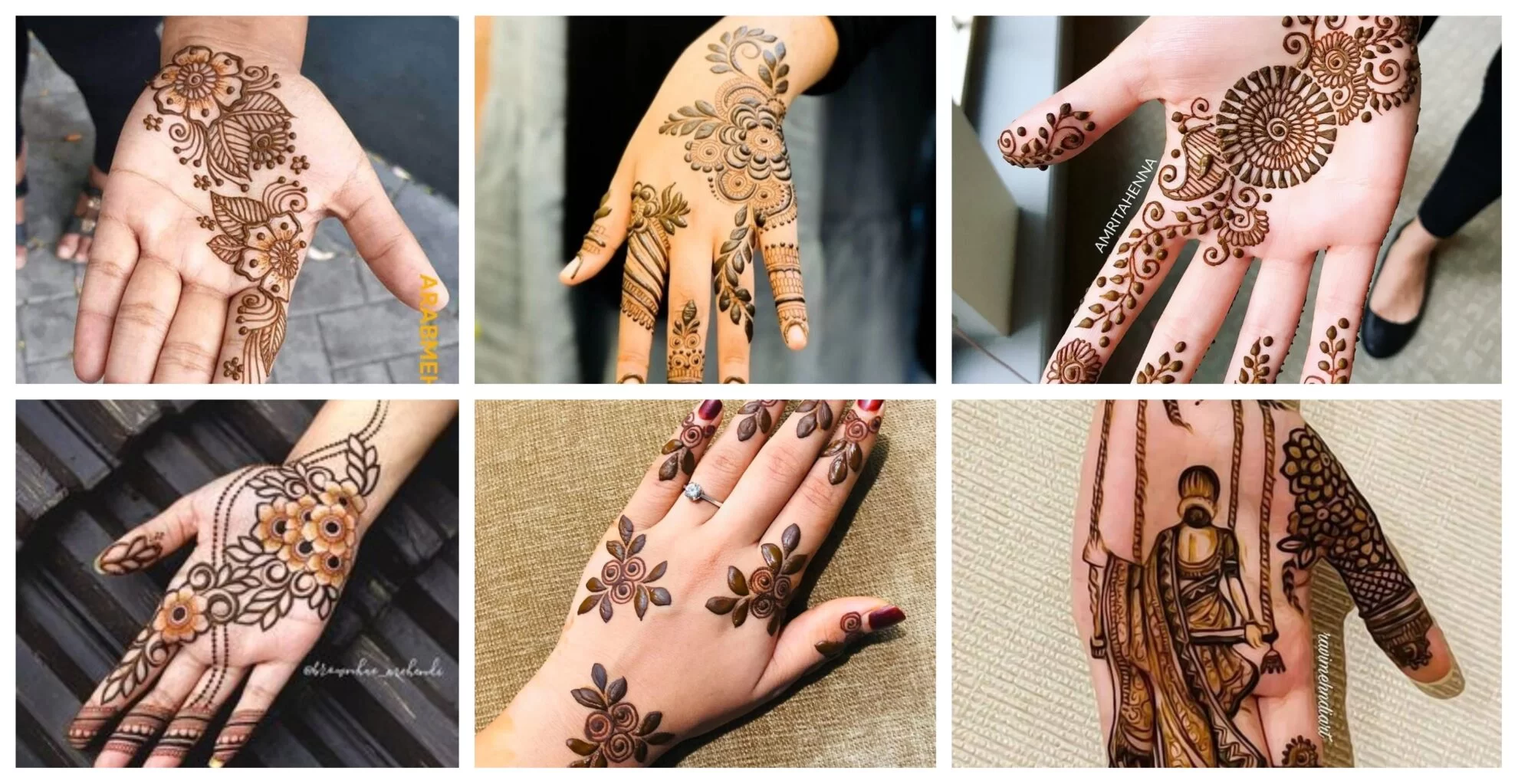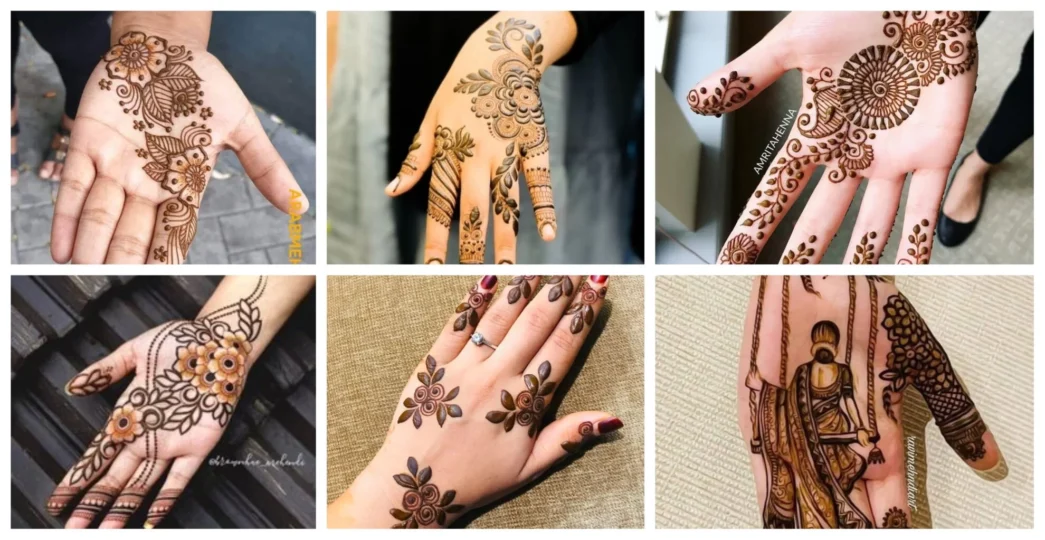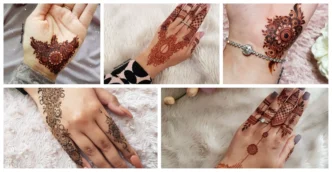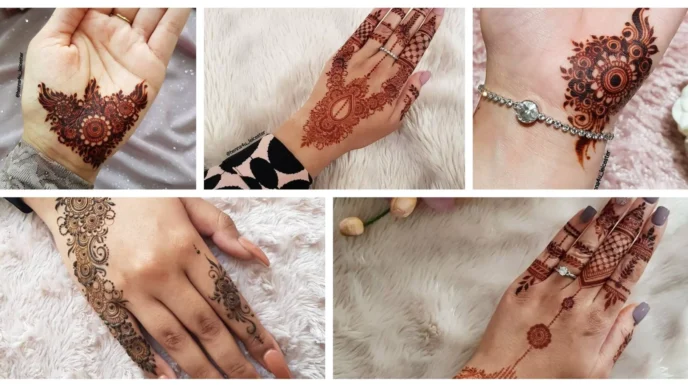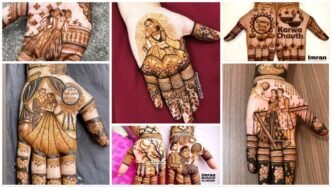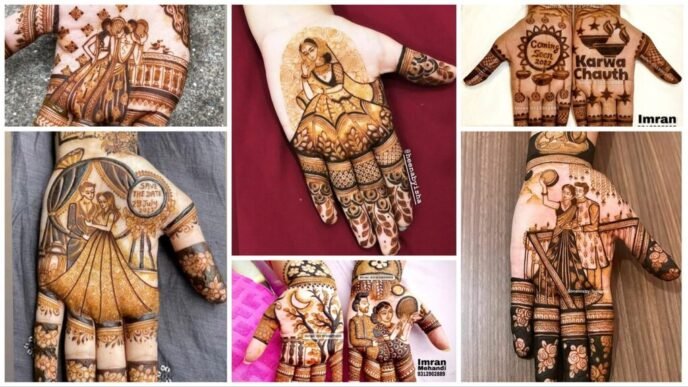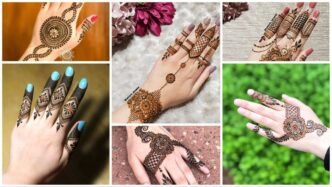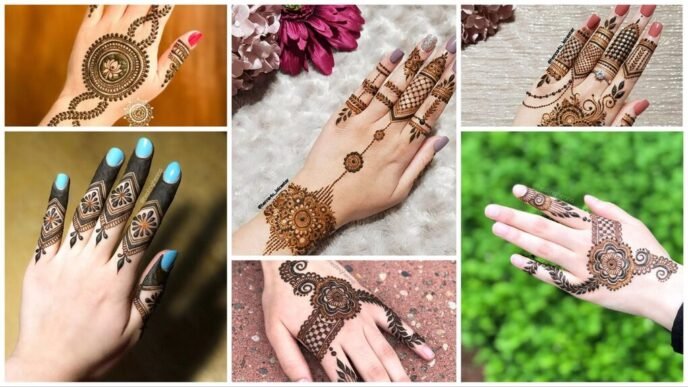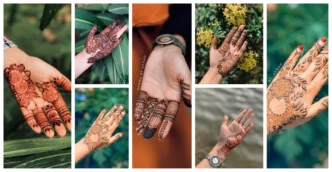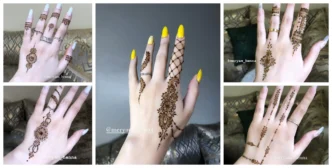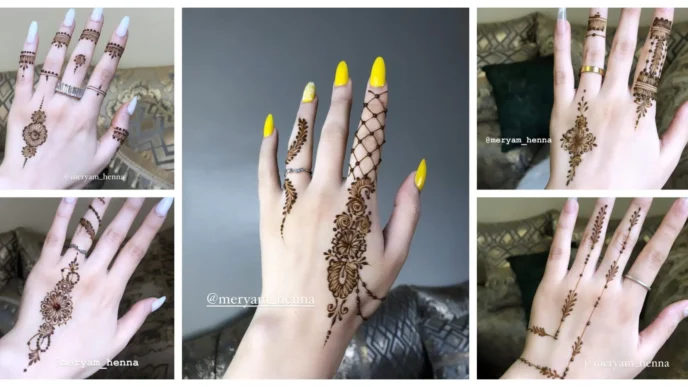As the monsoon season descends upon us, bringing relief from the scorching heat and an abundance of lush greenery, it also heralds the arrival of Sawan, a month of devotion, celebrations, and a touch of tradition. And what better way to embrace the spirit of Sawan than adorning your hands with exquisite mehndi designs? In this blog post, we invite you to explore the world of “Simple Mehndi Designs – Beautiful Sawan Special Mehndi Designs.”
Whether you’re a mehndi enthusiast or a newbie looking for elegant yet easy-to-create patterns, this guide is your gateway to celebrating the beauty of Sawan with the artistry of mehndi. Let’s dive into the enchanting world of henna artistry and discover some stunning designs perfect for the Sawan season!
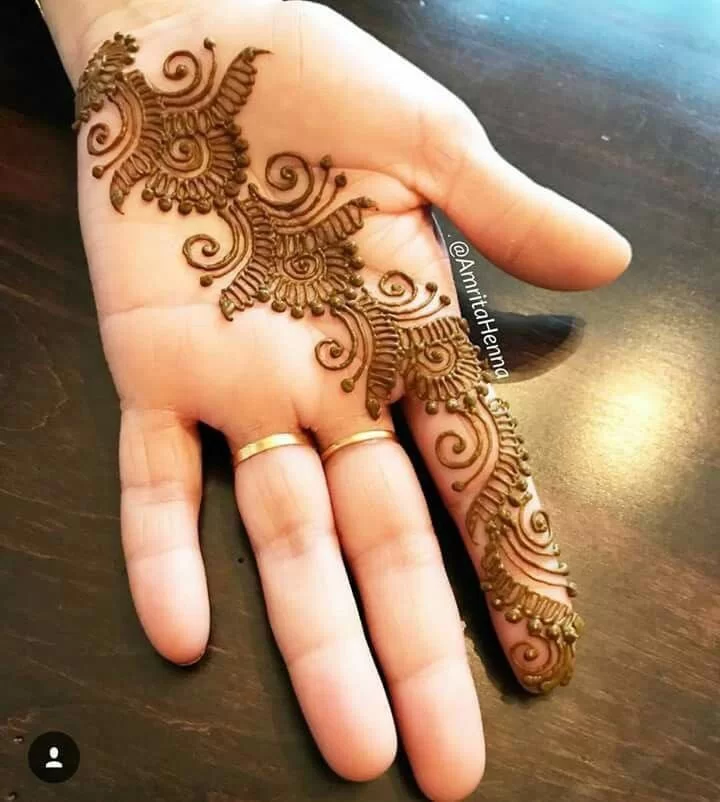
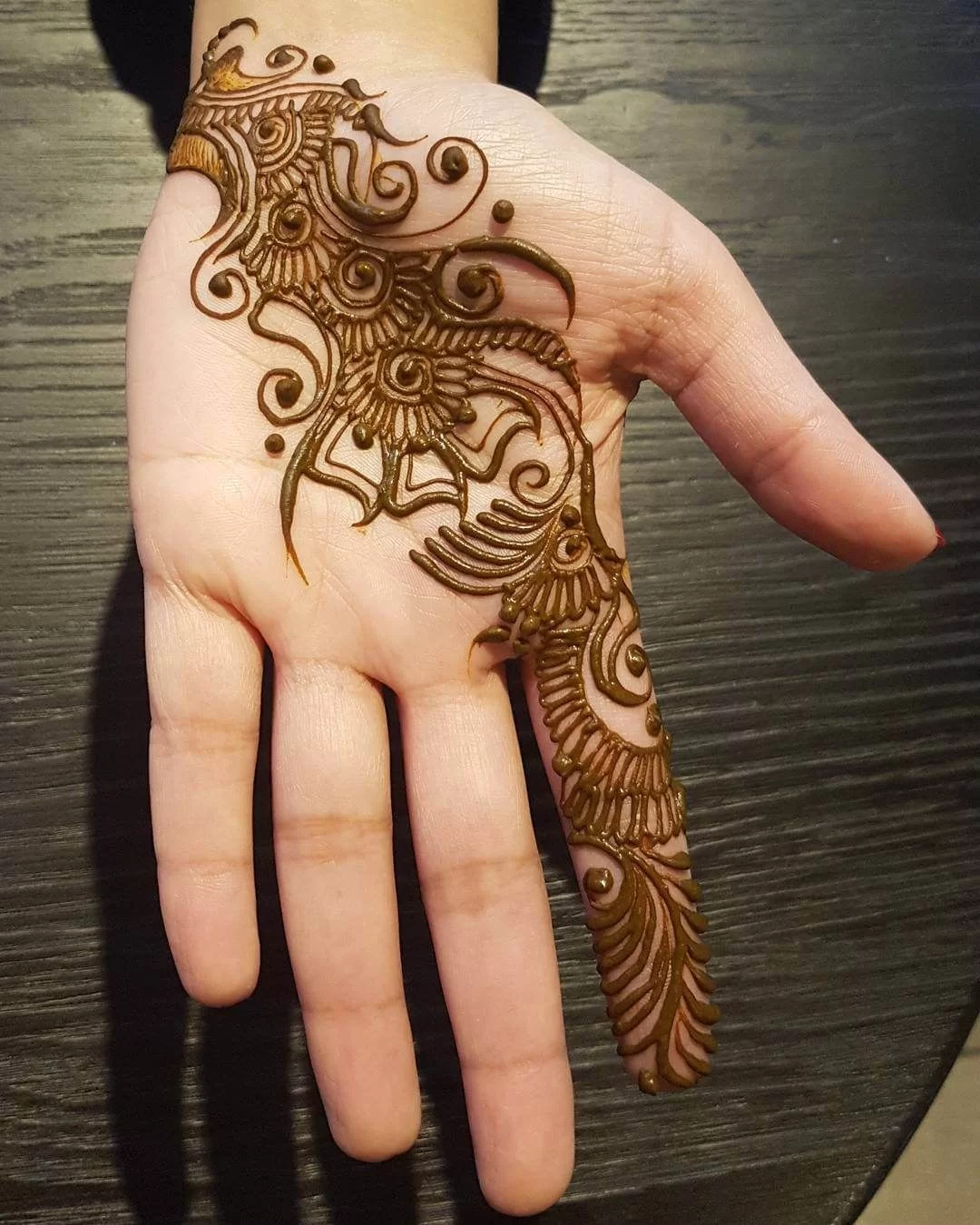
How many types of mehndi designs are there in India?
In India, there are several types of mehndi designs, each with its own unique style and cultural significance. Some of the prominent types of mehndi designs in India include:
- Traditional Indian Mehndi: This style typically includes intricate and elaborate patterns, often featuring peacocks, paisleys, flowers, and traditional motifs. It is commonly applied during weddings and festivals.
- Rajasthani Mehndi: Originating from Rajasthan, this style is known for its bold and detailed designs. It often includes depictions of brides and grooms, along with mirror work.
- Arabic Mehndi: Arabic mehndi designs are characterized by their free-flowing, floral patterns. They are less dense than traditional Indian designs and are often applied on the hands and feet.
- Pakistani Mehndi: Pakistani mehndi designs are a blend of Indian and Arabic styles. They are known for their intricacy and elegance, with designs that cover a larger area of the skin.
- Gujarati Mehndi: Hailing from Gujarat, this style features bold geometric patterns and is known for its use of peacocks and other birds in the design.
- Marwari Mehndi: Similar to Rajasthani mehndi, Marwari mehndi designs are known for their traditional motifs and intricate detailing.
- Mughlai Mehndi: Inspired by Mughal art and architecture, this style incorporates fine lines, symmetry, and motifs like domes and arches.
- Bengali Mehndi: Bengali mehndi designs are minimalistic and elegant, often featuring a simple paisley or floral pattern on the palm.
- South Indian Mehndi: This style is characterized by its use of temple-inspired motifs, mango leaves, and traditional South Indian symbols.
- Bridal Mehndi: Bridal mehndi is a category on its own, as it often combines elements from various regional styles to create intricate and personalized designs for brides on their wedding day.
These are just a few of the many mehndi design styles found in India. Each region and community may have its variations, and mehndi artists often blend elements from different styles to create unique and personalized designs for their clients.
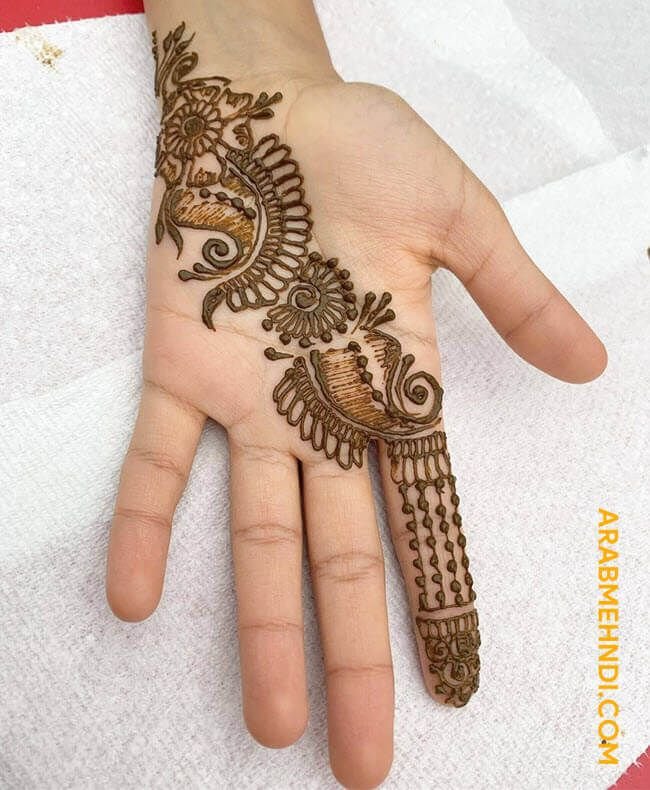
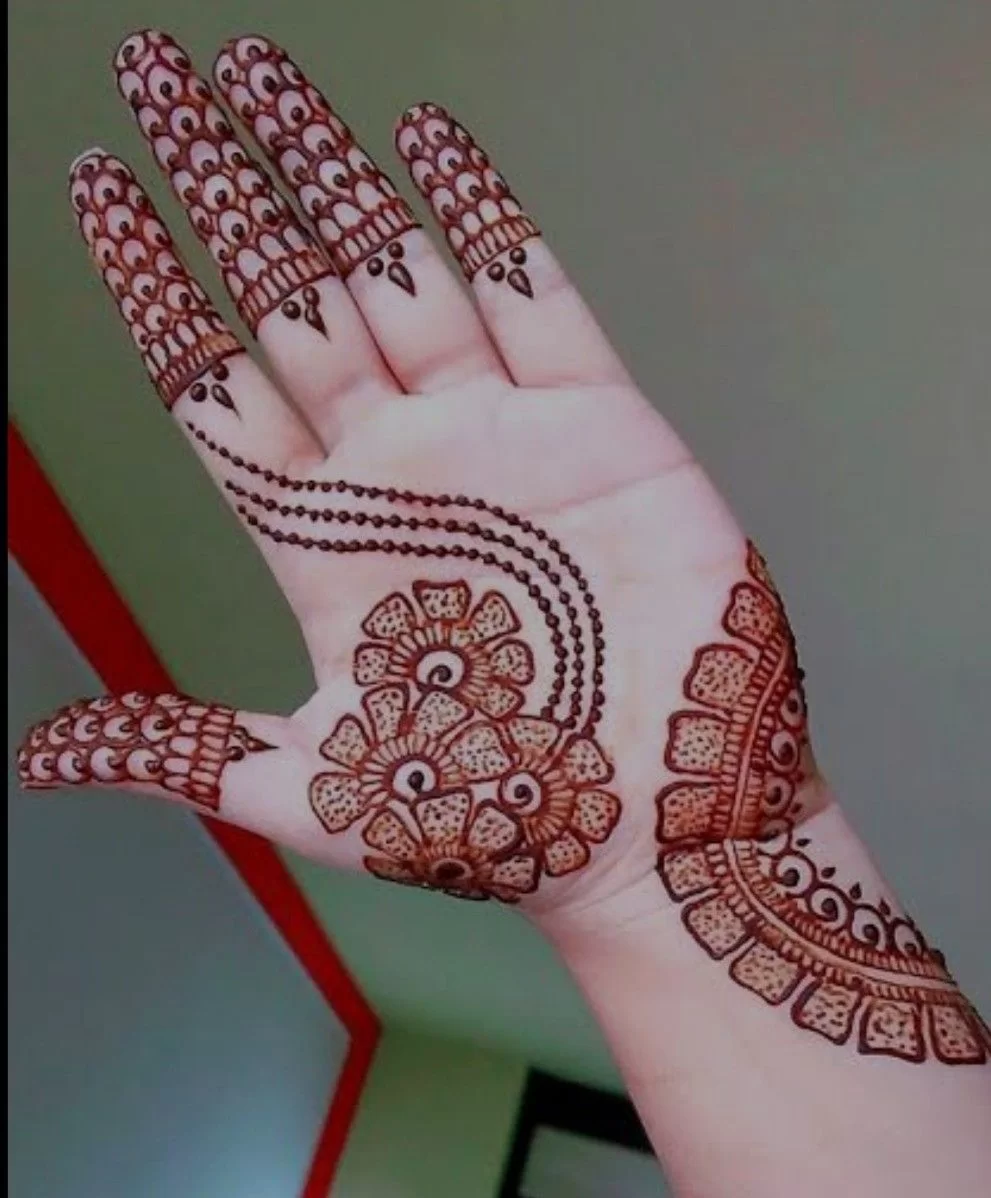
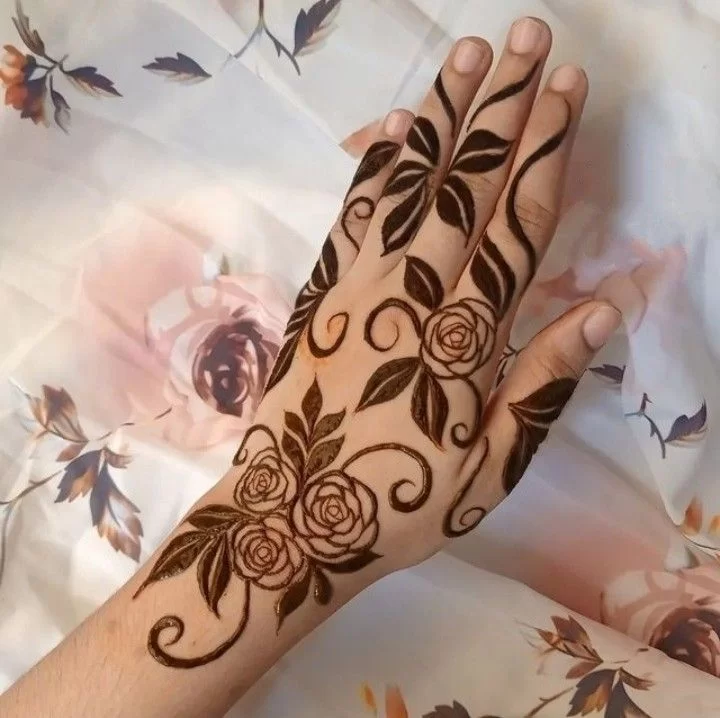

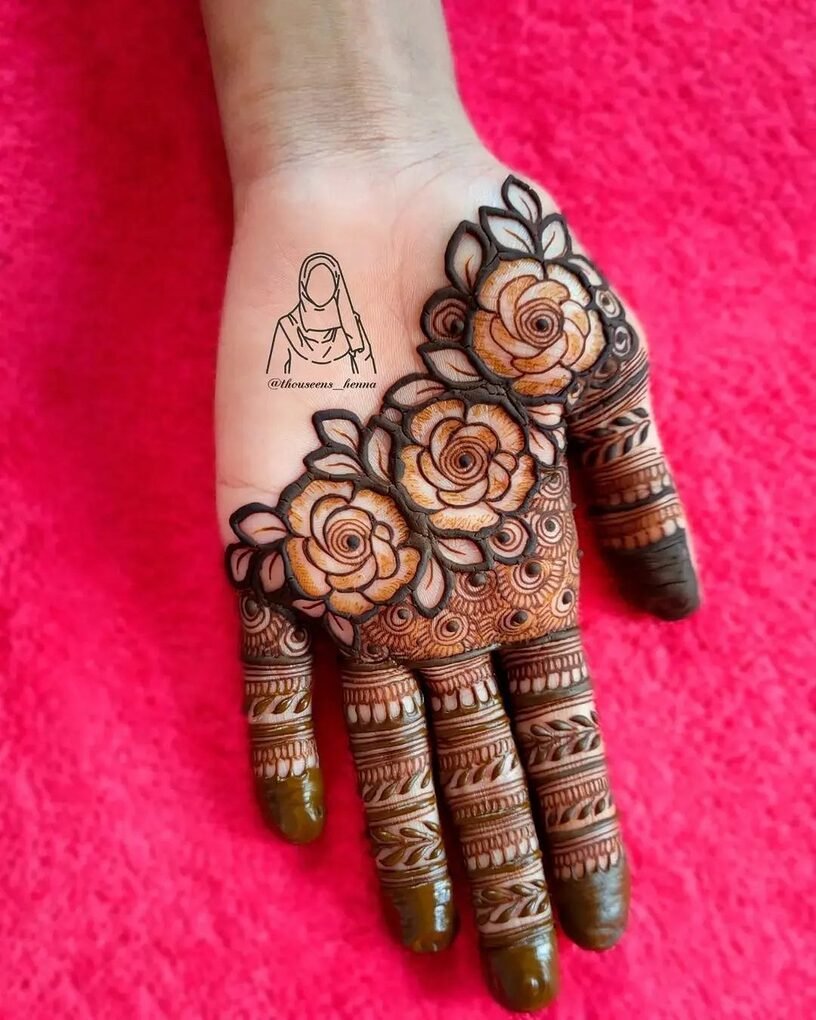
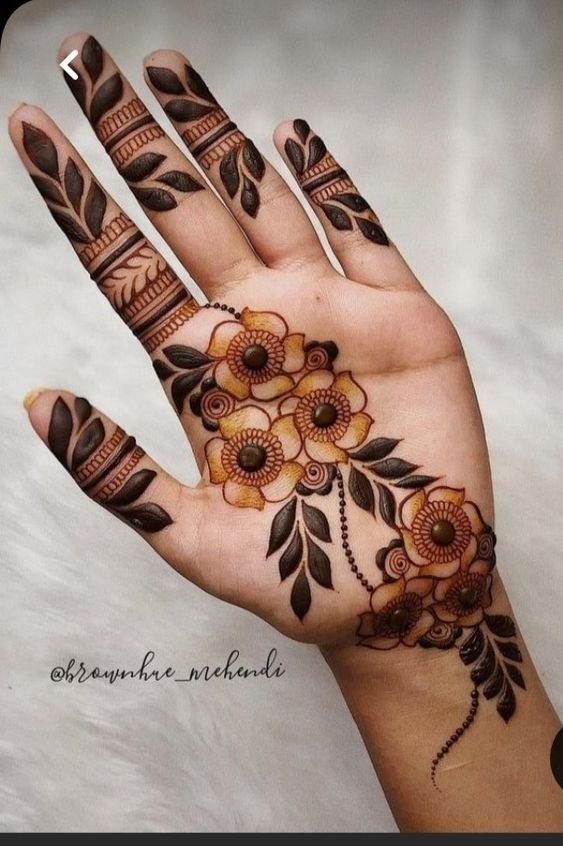
Which type of Simple Mehndi Designs is best?
The choice of the “best” type of mehndi largely depends on your personal preferences, the occasion, and the style that resonates with you. Each type of mehndi has its own unique charm and suitability for different situations. Here are a few factors to consider when choosing the best type of mehndi:
- Occasion: The type of mehndi you choose should align with the occasion. For weddings and festive celebrations, intricate and traditional Indian mehndi designs are often preferred. For more casual gatherings, simpler designs like Arabic mehndi may be a better choice.
- Personal Style: Your personal style and taste matter. Some people prefer the bold and detailed patterns of Indian or Pakistani mehndi, while others may lean toward the elegant and flowing designs of Arabic mehndi. Choose the style that you feel most comfortable and confident wearing.
- Duration: Consider how long you want the mehndi to last. Indian mehndi designs tend to be more long-lasting, while Arabic mehndi is known for its relatively shorter duration. If you want a temporary design, opt for styles like Arabic or Moroccan mehndi.
- Complexity: Are you looking for a simple and quick design, or do you have the patience for intricate and detailed patterns? Gujarati or Bengali mehndi, for example, tends to be simpler and faster to apply compared to the detailed work of Rajasthani mehndi.
- Regional Preference: Some people prefer mehndi styles that are specific to their region or culture. For instance, brides from Rajasthan may choose Rajasthani mehndi to honor their heritage.
- Outfit and Accessories: Consider your outfit and any accessories you plan to wear. The mehndi design should complement your overall look.
- Season: Certain mehndi styles may be more suitable for specific seasons. For example, lighter mehndi designs like Arabic or Indo-Arabic mehndi are popular during the summer months due to their refreshing and airy appearance.
Ultimately, there is no one-size-fits-all answer to which type of mehndi is best. It’s all about personal preference and the context in which you plan to apply it. Feel free to experiment and explore different mehndi styles to find the one that suits you best for any given occasion.
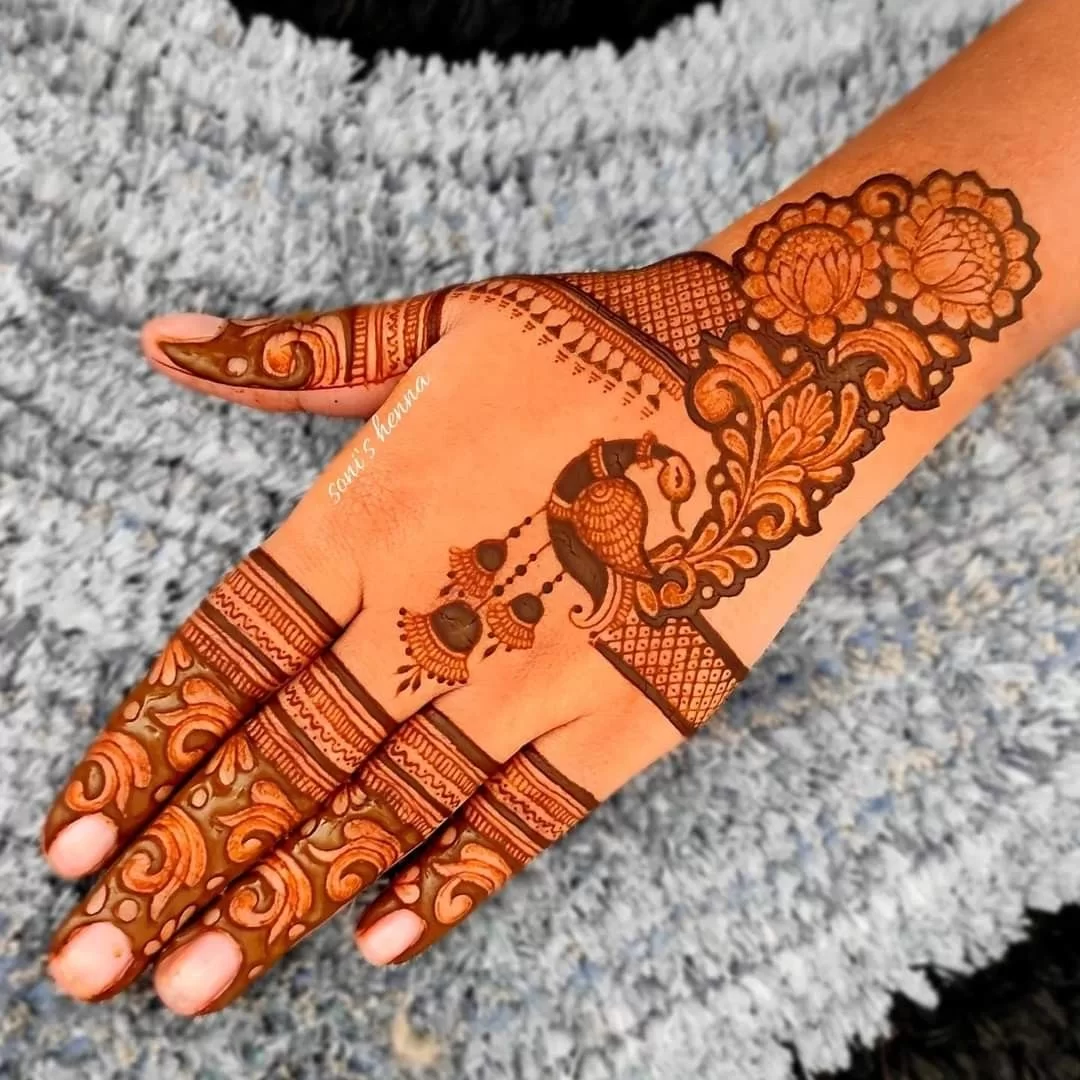



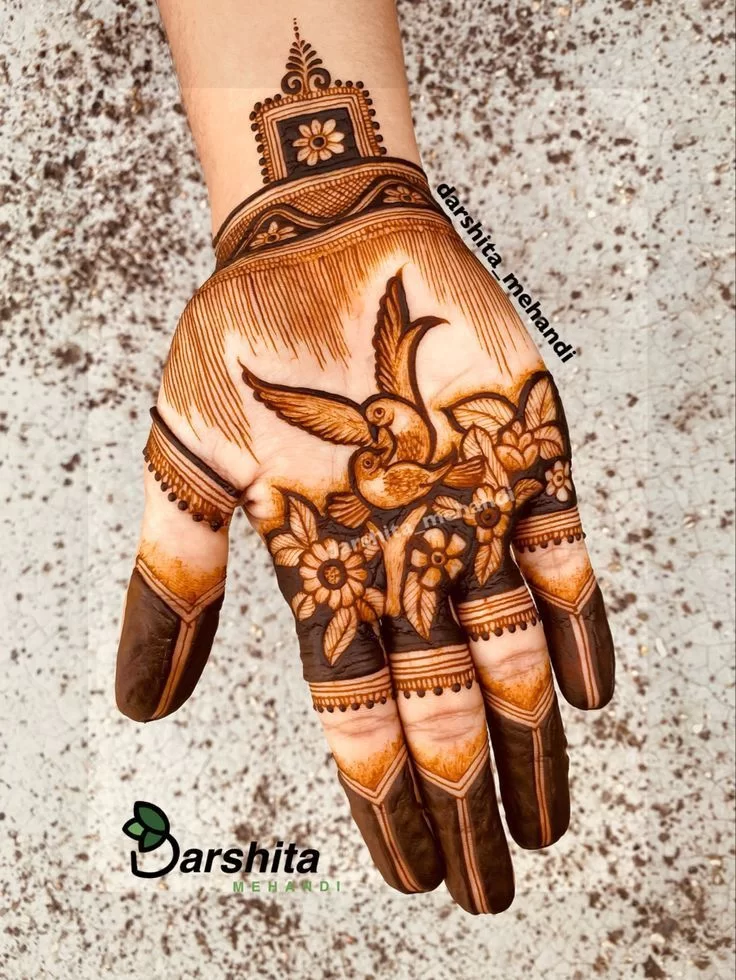
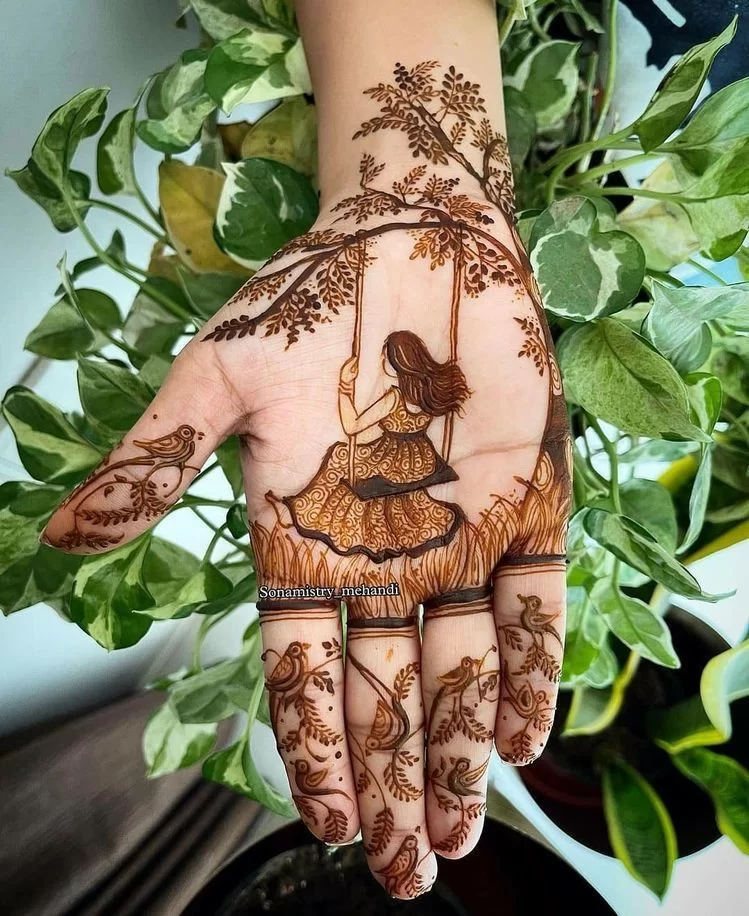

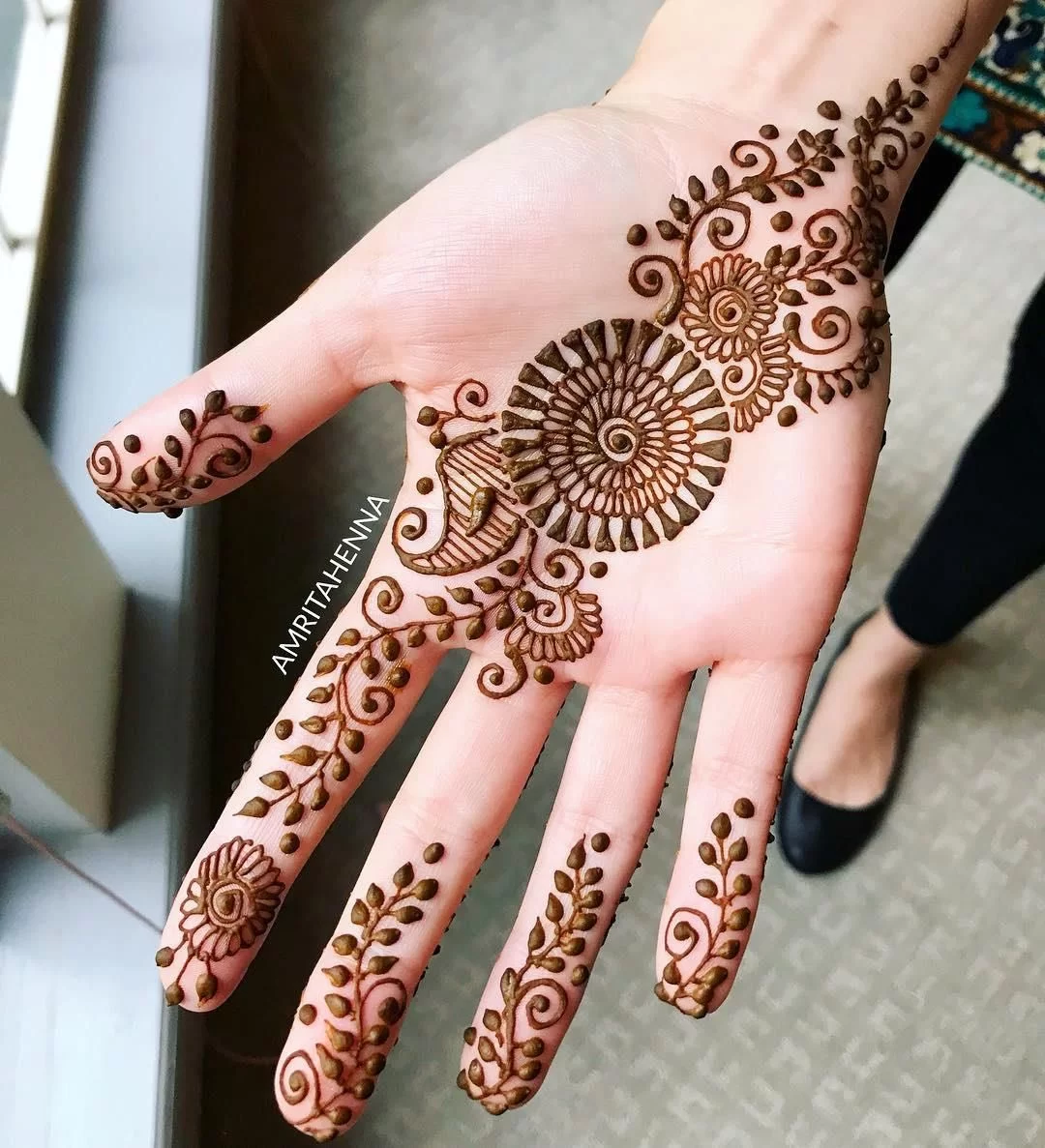
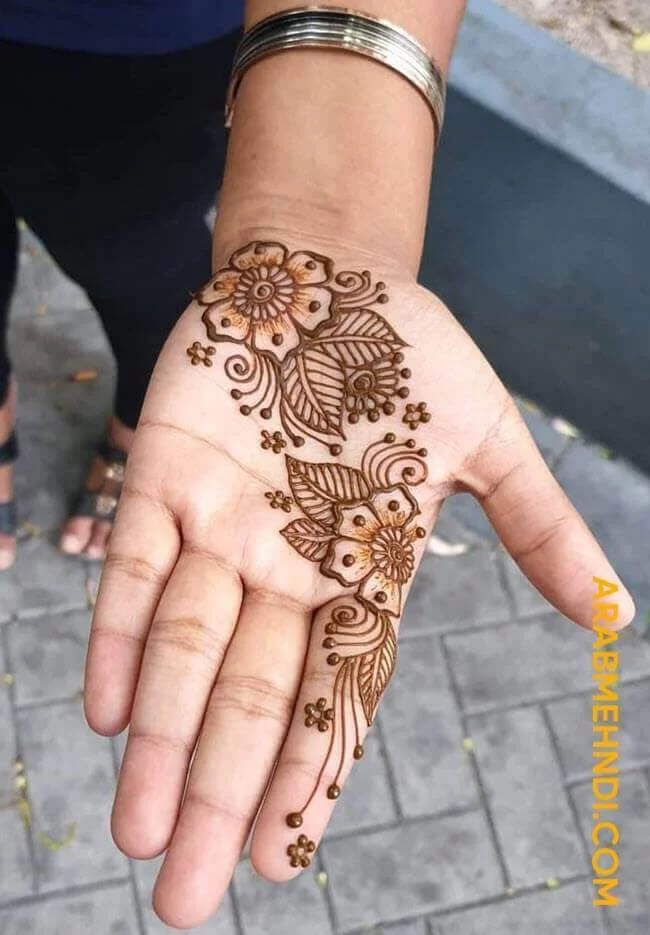

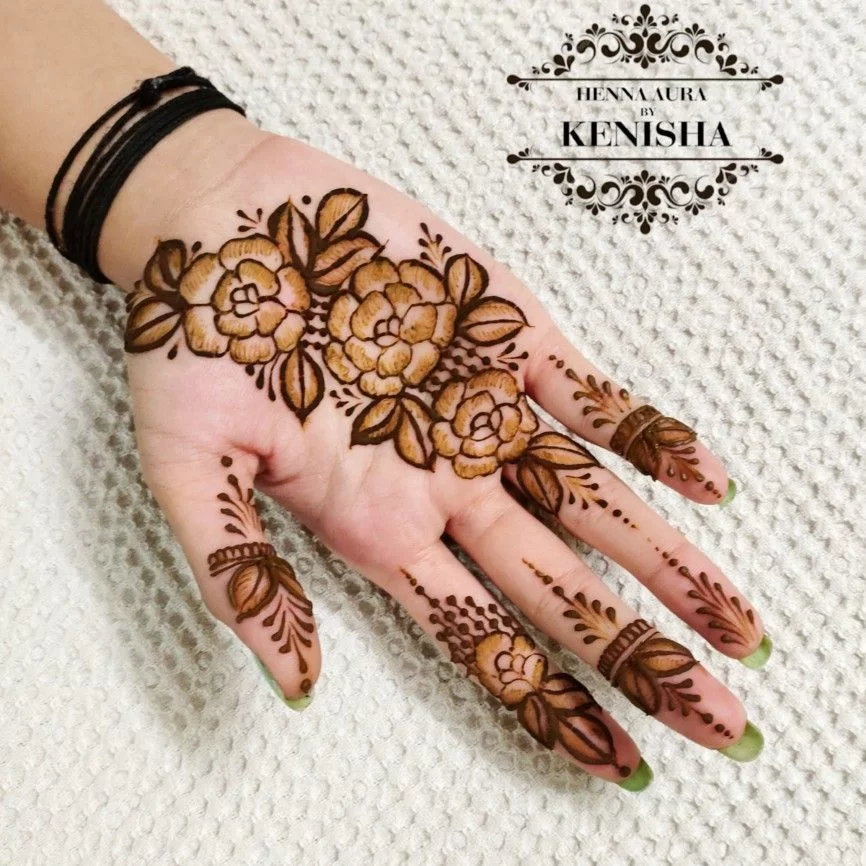



10 commonly asked questions about simple mehndi designs along with their answers:
- Q: What are simple mehndi designs? A: Simple mehndi designs are minimalistic henna patterns that are easy to create and typically involve uncomplicated motifs and fewer intricate details.
- Q: Can I apply simple mehndi designs by myself? A: Yes, simple mehndi designs are often beginner-friendly and can be applied by yourself. All you need is a steady hand and some practice.
- Q: How long do simple mehndi designs last? A: Simple mehndi designs generally last for about 1 to 2 weeks, depending on factors like the quality of the henna paste and how well it’s cared for.
- Q: What occasions are suitable for simple mehndi designs? A: Simple mehndi designs are versatile and can be worn for various occasions, including casual gatherings, festivals, and even daily wear.
- Q: Are there any specific designs that qualify as “simple”? A: Simple mehndi designs can include basic motifs like flowers, leaves, dots, and simple geometric shapes. There are no strict rules; simplicity is subjective.
- Q: What’s the difference between simple mehndi and bridal mehndi? A: Bridal mehndi is elaborate and covers a larger area of the hands and feet with intricate patterns, while simple mehndi designs are smaller and less detailed.
- Q: Can I add color to simple mehndi designs? A: While traditional mehndi paste dries to a reddish-brown color, you can enhance the design by applying glitter or colored mehndi cones for a temporary splash of color.
- Q: How can I make simple mehndi designs last longer? A: To extend the lifespan of your mehndi, avoid washing the design for the first 24 hours, apply a mixture of lemon juice and sugar before it dries, and protect your hands from excess moisture.
- Q: Do simple mehndi designs have cultural significance? A: While simple mehndi designs are often worn for aesthetic purposes, they can also carry cultural significance, such as during festivals and celebrations.
- Q: Can I combine simple mehndi designs with other styles like Arabic or Indian mehndi? A: Absolutely! Mixing styles can result in unique and beautiful mehndi designs. You can combine simple elements with more intricate patterns for a personalized look.
Simple mehndi designs offer a delightful and accessible way to embrace the artistry of henna. These uncomplicated yet charming patterns are not only beginner-friendly but also versatile, suitable for various occasions and personal styles. Whether you’re adorning your hands for a casual gathering, a festival, or simply to add a touch of elegance to your daily look, simple mehndi designs are a wonderful choice.
